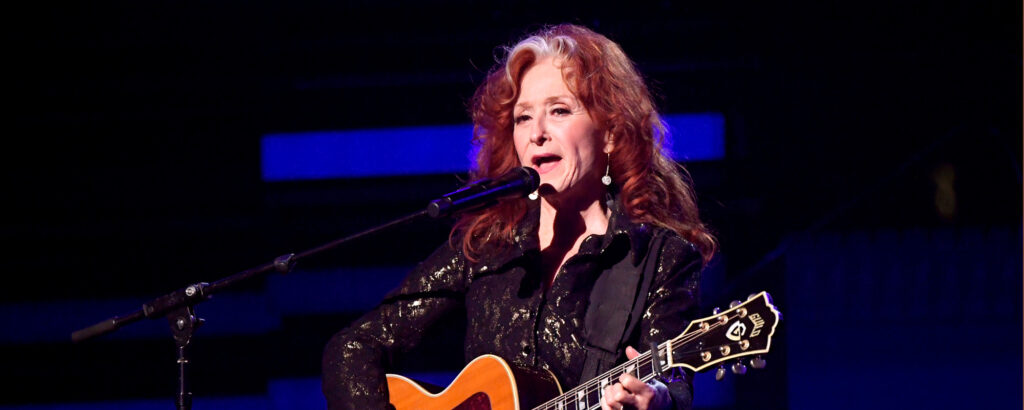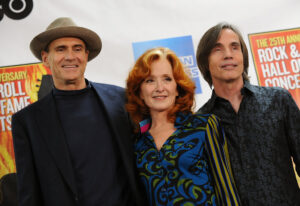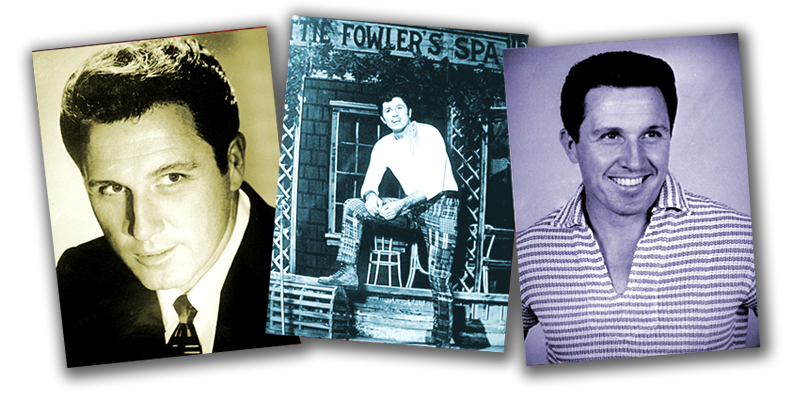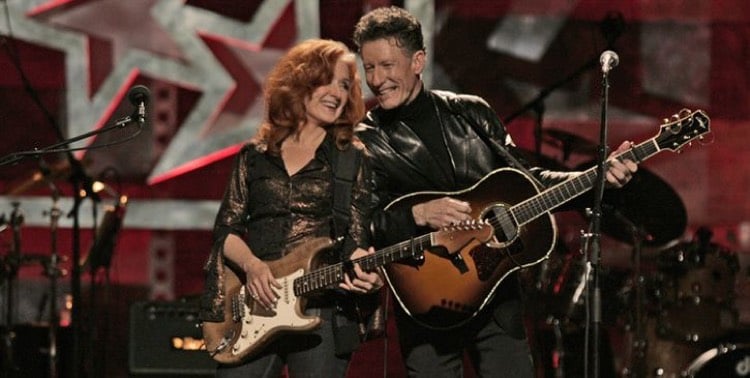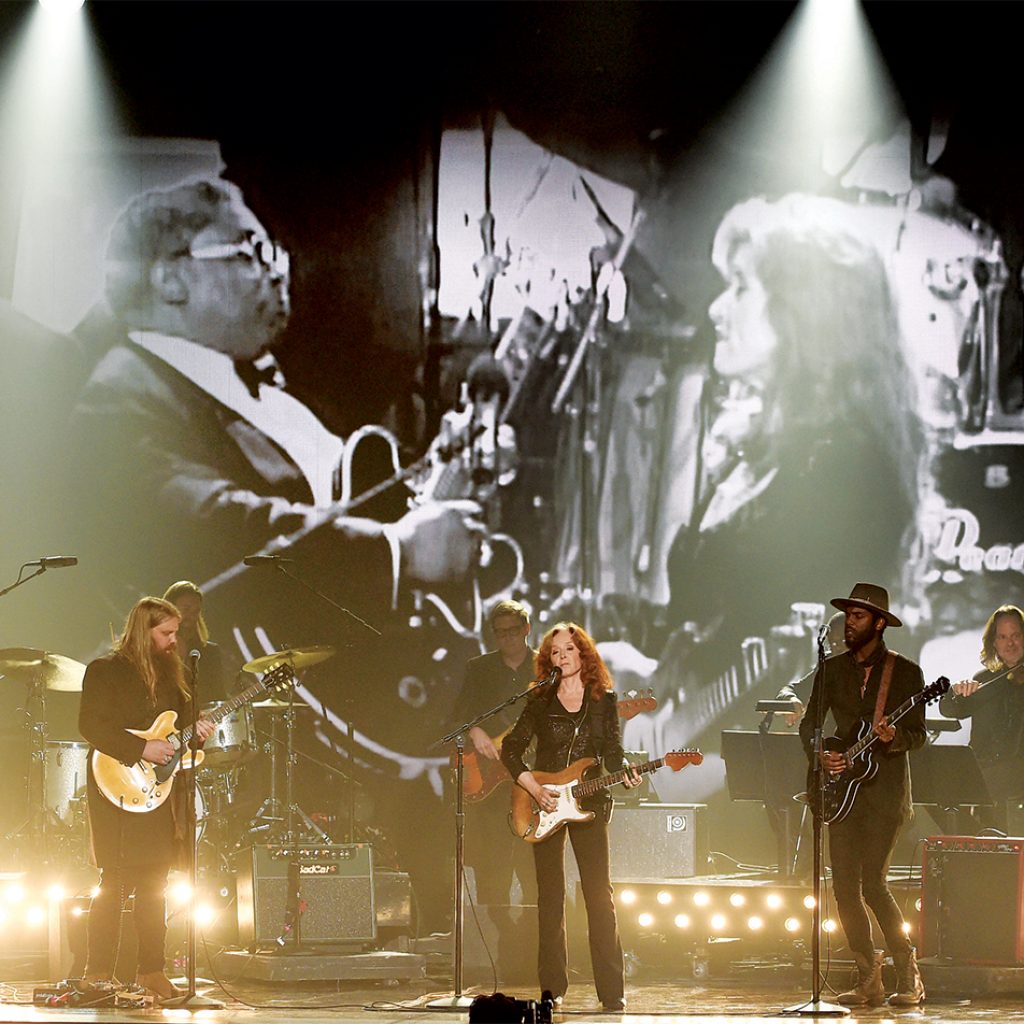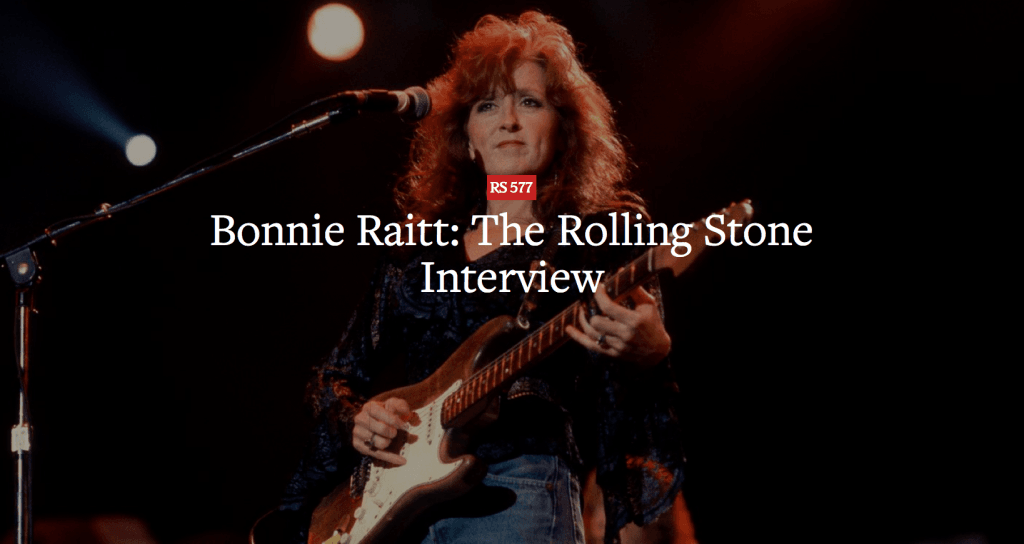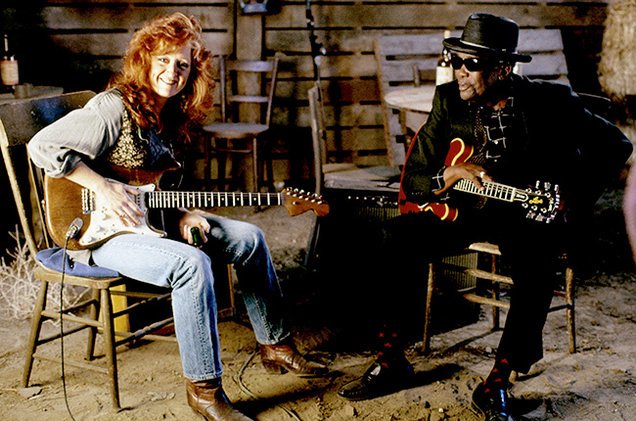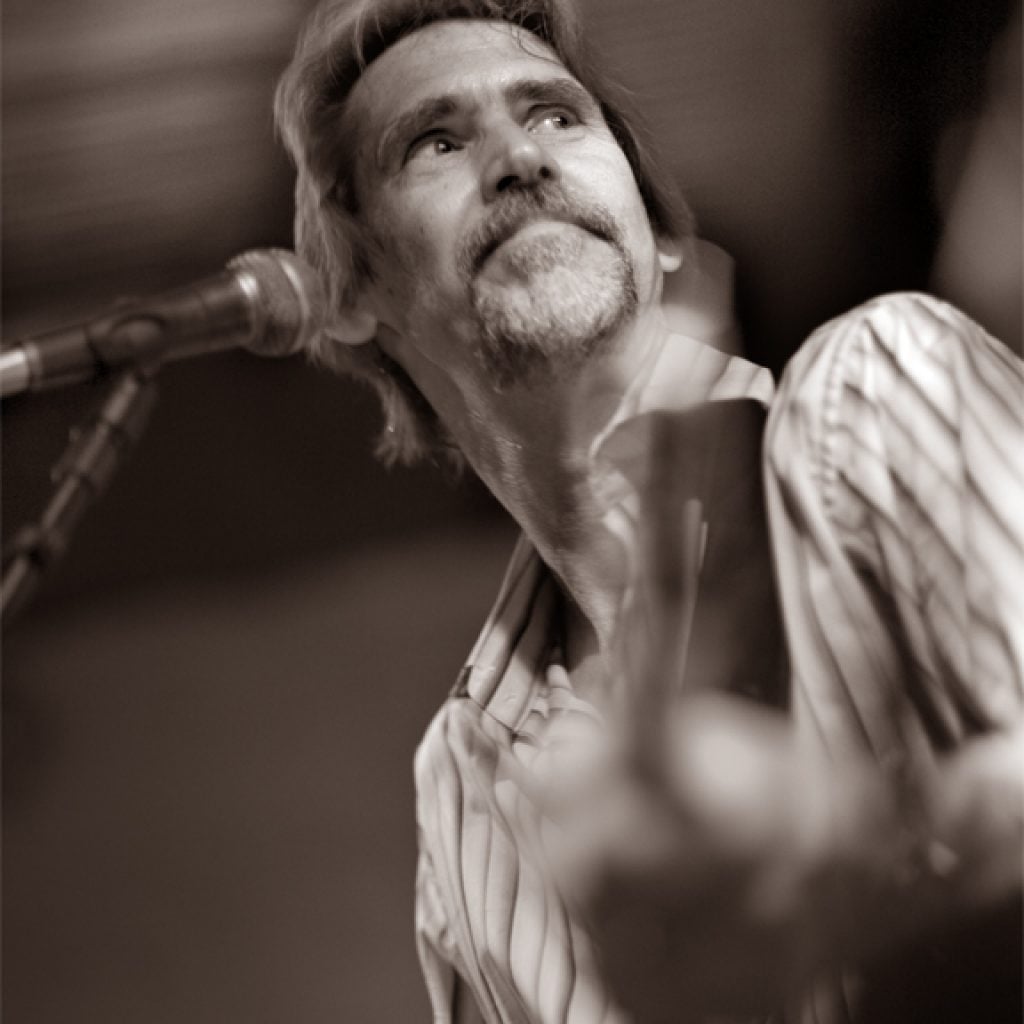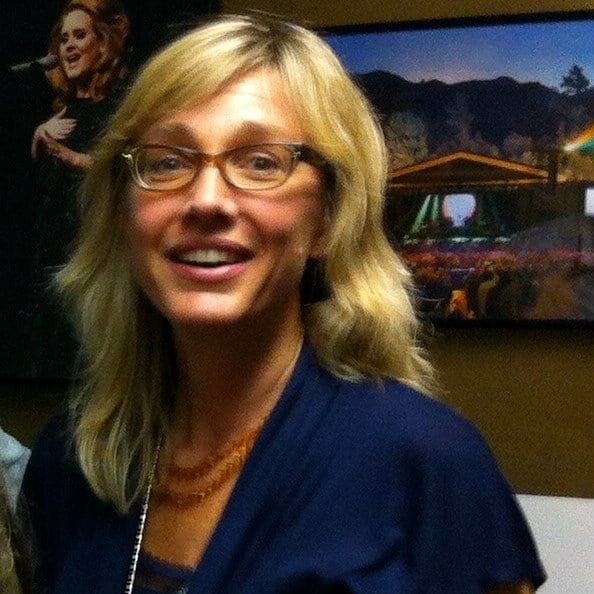
The odyssey of Bonnie Raitt and Sippie Wallace is a tale of sisterhood wrought of redemption and songs of heartbreak. Together they comprise an odd but well-matched pair of singers who have walked down the same blues alley from different worlds.
Sippie is one of the few surviving foremothers of the blues, and Bonnie is perhaps the most popular current artist using that vintage musical format.
This Thursday, these two women from different blues eras will make a rare appearance together in Sippie’s hometown of Detroit. The concert is scheduled for 8 p.m. at the Showcase Theater, Van Dyke and Harper.
THOUGH BOTH ladies have careers cast in blue, the contrast of their lives is startling.
Sippie is a stout black woman who grew up poor and Baptist in Texas and became a widely known blues singer in the 1920s. Bonnie, who is white, red-haired and freckled, was born to a show biz family of Quakers in Burbank, Calif.
Sippie Is rather proper and still very devoted to her church while Bonnie lives the freewheeling life of a traveling rock minstrel. Bonnie is 26, Sippie is exactly thrice that age.
While most of Bonnie’s performances these days are in sold-out arenas, Sippie plays to packed chapels every Sunday. While Bonnie’s work leans on a foundation of folk and rock, Sippie’s entire style is deeply rooted in gospel.
Yet these two women are linked by the soul experience of the blues. Their relationship is reminiscent of other female apprenticeships: Gertrude (Ma) Rainey trained Bessie Smith, who was in turn post-humously idolized by the late Janis Joplin.
Both Sippie and Bonnie have been active in promoting the cause of women. Sippie was among the first to talk to women frankly through the lyrics of her songs about their relationships with men. Bonnie does the same thing for the women of the 1970s.
The greatest similarity between the two singers is their disarming, gregarious friendliness. Any visitor to Sippie’s very humble home in downtown Detroit is likely to be treated to a performance of rare tunes like “Adam and Eve Had the Blues” or “The Special Delivery Blues.” Similarly, Bonnie avoids the pretentions of stardom.
Bonnie has spent a considerable amount of effort trying to win deserved recognition for such blues artists as Muddy Waters, Howlin’ Wolf and Mississippi Fred McDowell. “Soon Taj Mahal (another blues performer) and I will be the only ones left who really knew our musical ancestors,” Bonnie said recently.
However, Bonnie’s favorite cause is Sippie Wallace-the woman she considers her prime mentor and affectionately refers to as “my sassy grandmother.”
SIPPIE WAS of the generation of Ma Rainey, Bessie Smith, Chippie Hill, Margaret Johnson, Hociel Thomas (Sippie’s niece) and Mamie Smith.
She was born Beulah Thomas in Houston, Texas, in 1898. Her parents, Fanny and George Thomas, with eight girls and five boys of their own, took in five orphans as well.
Beulah eventually gave way to “Sippie,” a nickname given because her teeth were late in coming in and thus she had to sip everything she ate.
Sippie’s parents were devout members of the Shiloh Baptist Church-her father was an elder deacon and her mother was head of the women’s auxiliary.
As in the life of most blues singers, the church played a vital part in the development of Sippie’s talent. There she learned voice, harmony and how to play the keyboards. “For me there ain’t no difference between blues and gospel except for the words. And besides,” laughs Sippie, “I put the BE-BOP in everything I do anyway!”
Sippie had her first hit in 1923 when she recorded “Up the Country” and “Shorty George” for the Okeh label.
According to Ron Harwood, who has researched the sales figures, Sippie sold hundreds of thousands of records during the 1920s.
Musicians on Sippie’s records included Louis Armstrong, Johnny Dodds, Eddie Heywood, Buddy Christian and Clarence Williams.
IN 1927, Sippie moved to Detroit, but Sippie’s career, along with those of millions, came to an abrupt halt in 1929 with the Depression.
After that, with the exception of a few revivals, Sippie disappeared from the music scene until the late 1960s. She is reluctant to talk about the years in between when she had two daughters, lost her husband and buried most of her brothers and sisters.
Sippie was rediscovered in 1965 in Detroit by a couple of young, white jazz enthusiasts, Sam Stark and Ron Harwood. Stark had read, in an article by Victoria Spivey (another blues veteran) in an obscure journal called Record Research, that Sippie was still living in Detroit.
In October 1965, Sippie invited Harwood and Stark to her home. There they taped her singing. “We were just amazed,” said Harwood.
When asked what she thought about singing the blues after so many years she replied, “I can understand the blues after so many years. I can sing them now-I know what they are. I know what’s goin’ on.”
Shortly thereafter Sippie’s discoverers arranged for her to play a few dates with the Kweskin Jug Band-a group which at one time included Otis Spann, Geoff Muldaur and Maria Muldaur.
While playing at the Newport Jazz and Blues Festival in 1966, Sippie met Dick Waterman, who is perhaps the single most important and knowledgeable blues promoter in the world.
Waterman invited her to join the American Folk Blues Festival which toured Europe in the latter part of 1966 with such artists as Junior Wells, Roosevelt Sykes and Little Brother Montgomery.
While in Copenhagen they recorded an album on the Storyville label-a company whose records rarely made it across the Atlantic to the U.S.A. It was that album that later brought Bonnie and Sippie together.
After that tour, Sippie started having some health problems with arthritis and later had a stroke.
MEANTIME, Bonnie had grown from a rather reserved childhood into an energetic, peaceable renegade. She was born in 1949 to Marge and John Raitt. It was about the same time Sippie became the full-time organist for the Leland Baptist Church in Detroit.
Bonnie’s father was a noted actor who starred in Broadway hits like “Pajama Game,” “Carousel” and “Oklahoma!”
Bonnie’s parents were as devoted to their peaceful Quaker traditions as Sippie’s folks were to the hallelujah salvation of the Baptists.
In 1958, Bonnie’s parents and grandparents chipped in to buy her a $25 guitar for Christmas. Even then her musical tastes were somewhat different that those of her peers. No Frankie Avalon or surf stuff for her-R&B was the sound that moved Bonnie.
For college, Bonnie chose Radcliffe, the queen of the Seven Sister colleges and as well a center of the counterculture movement.
While there, Bonnie played in folkie bars and eventually met Waterman, the blues promoter. However, at the time blues was still riding in the back of the bus while psychedelic music was the craze.

In the summer of 1968, Bonnie went with two girlfriends to Europe. In London Bonnie ran across a blues anthology album. Among the artists was Sippie Wallace.
“When I listened to it I just couldn’t believe it. Sippie was the best thing I had ever heard,” recalls Bonnie. “It was so raw and sassy-even more so than Bessie Smith.”
IT WASN’T until four years later that Bonnie finally met Sippie. It was in 1972 at the Ann Arbor Blues & Jazz Festival. Waterman, who was managing Bonnie at the time, remembers, “I reminded Bonnie that Sippie lived only 40 miles away from the festival and we decided to make her contract for the event hinge on giving some stage time to Sippie.”
There, in the shadow of the performers’ tent, Sippie and Bonnie met for the first time. Even though Sippie was still recovering from her stroke, Waterman recalls that it was gleeful occasion.



At that time Bonnie was relatively unknown. However, after the show, she instructed Waterman to turn over a certain portion of their meager earnings to Sippie. Later in the day Sippie pulled Bonnie into a corner and tried to give her the money back.
In the past two years, Sippie and Bonnie have traded songs and letters and performed together on a few occasions in places like Boston and Washington, D.C.
When they play together, their mutual affection and admiration is apparent. Sippie usually begins by singing some of her favorite blues, then plays a little gospel and then is joined by Bonnie and her group for some songs like “Mighty Tight Woman” and “Women Be Wise.” Sippie leads the way on gospel tunes like “Amazing Grace.” Bonnie’s tender pleading and bottleneck-guitar playing compliment Sippie’s spirited, rough voice.
The last time they played together was in Ann Arbor last November. It was Sippie’s birthday. After Sippie unveiled her “Bonnie, You’re So Wonderful,” a song written in tribute to her young friend, Bonnie led the packed house at Hill Auditorium in a rousing rendition of “Happy Birthday.”
As they stood arm in arm clutching each other they reflected the sweet, tortured gleam of the blues.
About The Author















 Visitors Today : 62
Visitors Today : 62 Now Online : 1
Now Online : 1






